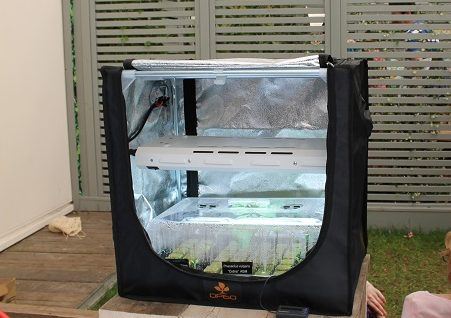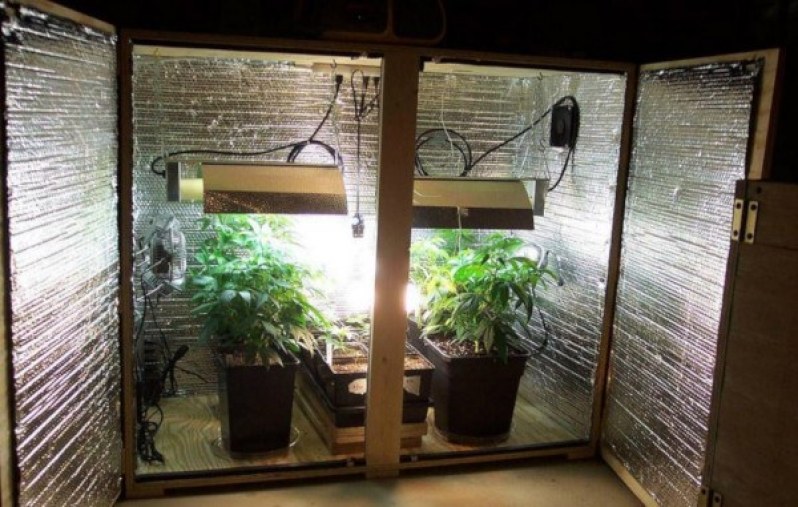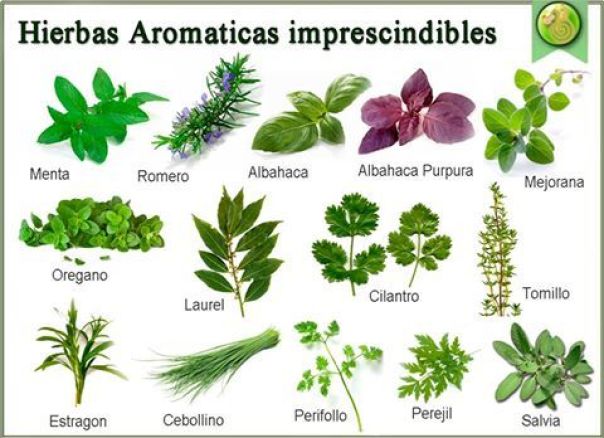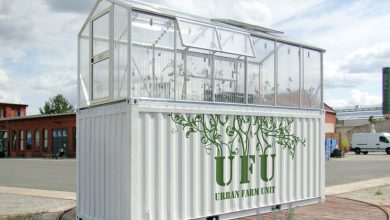Homemade Indoor ✔️ How to make a grow tent 【 Step by Step 】

A few days ago we talked about a very peculiar type of home garden: cabinet gardens or indoor cultivation. In the post Growing cabinets to produce at home we saw different types of cabinets, the advantages and disadvantages of home indoor growing, and the components of these structures to grow indoors.
As we have already seen, one of the disadvantages of growing cabinets is the price, so today we are going to talk about an alternative to buying: making a homemade cabinet for indoor growing. Read on if you want to discover what kind of plants can be grown in grow tents and how to make a home indoor step by step.

How to make a homemade indoor: Assemble a grow cabinet step by step
As we have said, the main problem with grow cabinets is the price, so making a home grow cabinet can be an alternative that can save us a few hundred euros.
Knowing what is needed to build a home indoor (we saw it in the previous post), it is easy to get the different components separately and make a home indoor or indoor grow cabinet. To do this, follow these steps:
- Think about what you want to grow inside the cabinet, because based on that you will have to find a cabinet of adequate dimensions (depending on the size that the plants reach).
- Look for the “closet”. Use an old wardrobe you have lying around the house, a broken microwave, or any such container that can be opened and closed. The size will depend on your tastes, space and the recycling materials you have available, you can even take advantage of a built-in closet or a hole in the wall to make a built-in grow cabinet (like the one in the photo below).
- Line the cabinet on the inside with a reflective material.
- Install the light bulb inside the cabinet, at the top. Drill a hole in the top or side of the cabinet to route the wires from the lamp(s) to the plug or outlet.
- Place the different growing trays or pots inside
- Install an automatic irrigation or, on the contrary, do not forget to water the plants when necessary.

Built-in cupboard for growing at home. Source: «10 golden rules for indoor cultivation»fumanchu.info/10-reglas-oro-cultivo-interior/
Hydroponic grow cabinet
In this video they teach us how to make a very special grow cabinet: with hydroponic crops. This form of cultivation is characterized by not using soil, but an inert material such as gravel or rock wool (where the roots are sustained) , in addition to a liquid solution that contains the necessary nutrients for the plant.
For the rest, the philosophy of this type of grow tent is the same:
What can we grow in a homemade indoor?
The plants that work best in these types of conditions are usually aromatic plants. As we have already mentioned in previous articles, aromatic plants have a lot of advantages. Many of them have medicinal properties and are very interesting in organic gardens, as they help enhance the flavor of vegetables and repel many garden pests.
They provide, along with the flowers, a touch of color and scent in the places where we put them. As if this were not enough, they are very useful for cooking, and one of the ingredients always present in many of the dishes of Mediterranean cuisine.

Plants for grow tents
Some examples are:
- BASIL: It is usually eaten fresh. You can add it to salads and it is the main ingredient in the famous pesto sauce! Without a doubt, a good option to grow it in the cabinets.
- MINT OR PEPPERMINT: Apart from being used as a decoration in many dishes, they are used in desserts and drinks such as mojito. In addition, they can also be added to salads or sauces. And… they smell wonderful!
- PARSLEY: We can use its leaves both fresh and dry to add flavor to many dishes: fish, meat, sauces, etc.
- OREGANO: Oregano is one of my favorite aromatic plants! You can use it on pizzas, salads, meat or fish and it will give them a great touch.
- ROSEMARY: widely used to make oils, soaps, infusions and is sometimes added to stews.
We have some posts on the blog about the cultivation of these aromatic plants, so do not hesitate to type in the search engine above if you want to know more about how to grow any of these garden herbs at home.
This is all for today, I hope you liked the article! If any of you have a wardrobe of this type or have tried to make a homemade indoor, you can leave us your experiences or doubts in the comments below!



![Photo of How to Plant Tulips and Have a Spectacular Garden: [12 Steps + Images]](https://www.complete-gardening.com/wp-content/uploads/2022/08/how-to-plant-tulips-and-have-a-spectacular-garden-12-steps-images-390x220.jpg)
![Photo of Humid Tropical Climate: [Characteristics, Flora, Fauna and Adaptability]](https://www.complete-gardening.com/wp-content/uploads/2022/08/Que-es-el-clima-tropical-humedo-300x225-1-300x220.jpg)